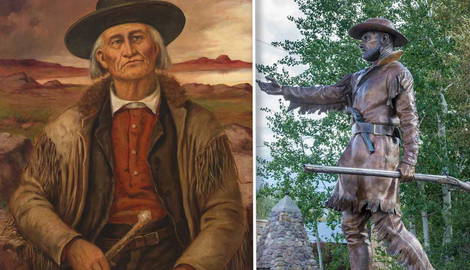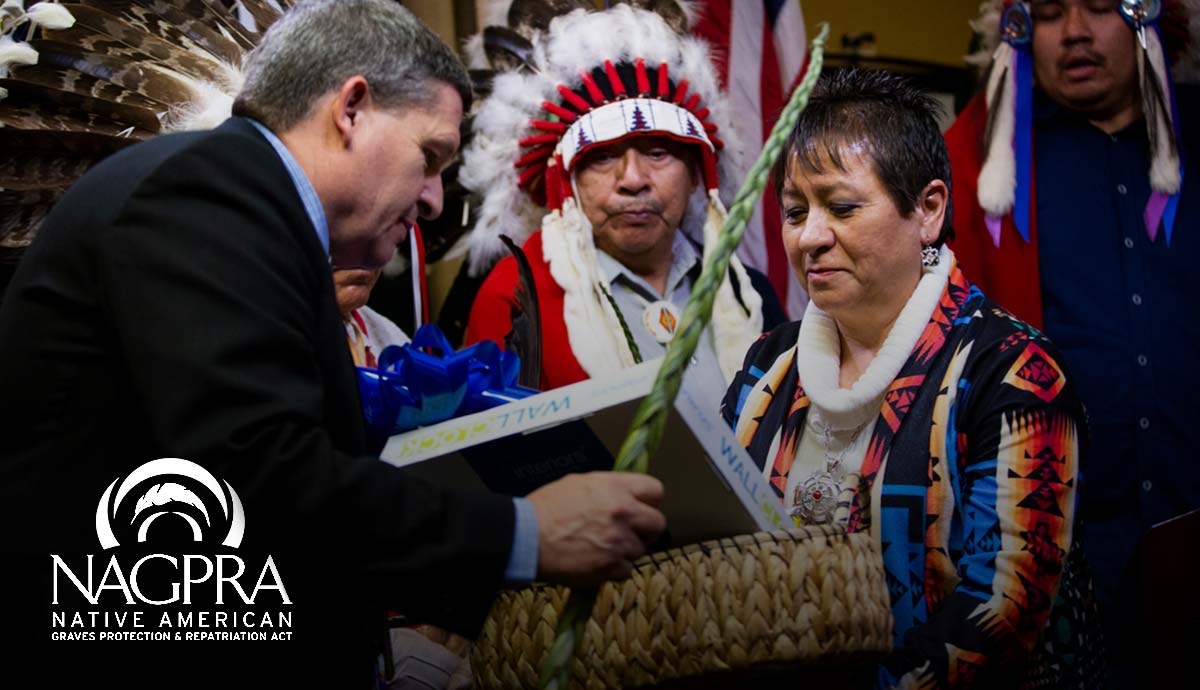
Mountain men played a key role in developing the American West. They lived the idea of Manifest Destiny with reckless abandon, pursuing freedom and adventure and sometimes gaining a little wealth along the way. James “Jim” Bridger was one of the most notable of these men, born in 1804 in Virginia. He was a trapper, fur trader, explorer, and guide who was renowned for his skill. He established the busy Fort Bridger along the Oregon Trail and inspired thousands to head west in pursuit of their own adventures.
1. Jim Lost His Family in the Span of Two Years

Details about Jim’s early life are somewhat murky, thanks to the limited record keeping of the time. However, it is known that Jim was born in Virginia to two hard-working parents: a father (Patrick by some accounts, James Sr by others), who made a living as a farmer, and a mother, Chloe, who ran an inn. Jim also had an older brother and a younger sister, and some sources report a baby brother (name unreported, who likely died at a young age) as well. The family lived a relatively ordinary life, getting by on their sweat and dedication. However, between 1815-1817, Jim lost his brother(s) and both parents to an unknown disease. He and his sister, Virginia, were left orphans. He was only 13 years old and his sister even younger. Virginia went to live with an aunt and Jim began working as a ferryboat operator and apprentice blacksmith to make his way in the world.
2. He Was the First White American to See the Great Salt Lake

Jim spent part of his younger life in the employ of William Ashley’s fur company. In the winter of 1824, part of the group was camped on the Upper Bear River in what is now Utah. There was some dispute among the group as to the course of the river and to solve the disagreement, they split into groups to explore the region. Bridger followed the flowing water to its outlet, which is what is known today as the Great Salt Lake. He believed he had reached the Pacific Ocean due to the salinity of the water. As far as recorded history is aware, Bridger was the first white American to visit the Great Salt Lake, though, given the many Indigenous people who had visited the lake in the centuries before the arrival of the Ashley party, Bridger was ultimately just one of thousands.
3. He May Have Abandoned Hugh Glass

Hugh Glass was another legendary mountain man who became practically mythical after enduring a series of life-threatening challenges and coming out on top. Glass and Bridger may have worked together, with Bridger possibly playing quite a large role in Glass’s story.

Glass was a member of Ashley’s fur hunting brigade, known as the Second Ashley Expedition, which set out from St. Louis in 1823. The group faced numerous challenges, including attacks from Indigenous groups. While hunting game for the men to eat, Glass stumbled upon a mother bear and her cubs. The bear attacked and almost killed Glass before his companions heard his cries for help and were able to dispatch the bear. As he hovered on the brink of death for several days, the group’s leader, Andrew Henry, decided they needed to keep moving for the rest of the group’s safety. He asked for two volunteers—who would be reimbursed—to stay behind, wait for Glass to pass, give him a Christian burial, and then catch up. The two volunteers were recorded as John Fitzgerald and a teenager named “Bridges.” Based on the timing, Bridger’s age, and his employment with the company, it is believed by many historians that “Bridges” was likely Jim Bridger.

The men stayed with Glass for a few days before Fitzgerald convinced Bridges/Bridger that they needed to get going for fear of another Indigenous attack. He figured Glass would die anyway and no one would be the wiser. The two men took all of Glass’ possessions, including his rifle, and left him beside a spring. Glass would go on to beat the odds and not only survive, but trek hundreds of miles back to civilization, where he attempted to hunt down the two men who did him wrong. It was later revealed that Glass held no ill will toward Bridges/Bridger, who he felt was influenced by Fitzgerald, the true decision-maker. He was reported as saying “For your youth, I forgive you”.
4. He Probably Doomed the Donners

As the fur trade began winding down, Jim Bridger, along with partner Louis Vasquez, established a trading post along the Oregon/California Trail, where the Mormon Trail continued to Utah. Located in Wyoming, the original “fort” was simply two forty-foot-long log houses and a horse pen. It eventually developed into a larger compound and served as a Pony Express, Overland Stage, and telegraph station in the 1860s. Later, it would be garrisoned by the U.S. Army.

One group of weary travelers that stopped at Fort Bridger in 1846 was the ill-fated Donner Party. Forever preserved in the annals of American history as one of the worst cases of western migration calamity, ending in the deaths of 42 and leaving dozens more emotionally scarred, the travelers became trapped in the Sierra Nevada Mountains after attempting to follow “The Hastings Cutoff.” The cutoff had been mapped and promoted by a man named Lansford Hastings and happened to bring much more business to Bridger. However, Hastings had never actually traveled the cutoff himself, and it would later become clear that it was in fact longer and more hazardous than the existing route.

When the Donners reached Fort Bridger, they expected Hastings to meet them there to guide them across the cutoff. Hastings, however, had already lit out with another party. In his absence, Bridger reported to the group’s leaders that the route ahead was level, with plenty of water and grass. This was a fabrication, as he had no idea about the conditions on the route. What he did know was that if more people traveled the route successfully, it would bring him more business, so he sent them on their way. Louis Vasquez played a role in this deception as well, as he kept in his pocket a letter that had arrived at the fort addressed to James Reed, a Donner party leader. The letter, from a friend of the party, Edwin Bryant, reported on the difficulties of the cutoff and told them to turn back. They never even knew the letter existed.
5. He Was Known for His Tall Tales

Jim Bridger was known and loved for his tall tales, telling of wonders he had seen and adventures he had experienced. Quite a few of them stretched the truth, but they made for good material to regale visitors to his fort. For example, one of his favorite stories to tell was about visiting Yellowstone. He claimed that the petrified forests there were filled with “peetrified birds singing peetrified songs.” In another mythical tale he told of a lake he was familiar with that had cool water deep down but boiling water on top—he’d caught fish there, and by the time he’d reeled them in, they had all been cooked for his dinner. When asked about his storytelling, Bridger is said to have shrugged and commented that he “didn’t think it proper to spoilt a good story just for the sake of the truth.”
6. All Three of His Wives Died in Childbirth

Jim Bridger had three wives over the course of his life, all of them Indigenous women. His first wife was Cora Insala, daughter of the Chief of the Flathead nation. They had met previously and known each other for some time before their marriage in 1835. They had three children together, and Cora would pass away from complications from childbirth in 1845. His second marriage took place in 1848, to a Ute woman whose name has been lost to history. She would also die in childbirth, after bearing the couple’s first and only child. Jim’s third wife, Mary Washakie, married him in 1850. She was a Shoshone woman who had worked as Jim’s housekeeper for about two years before they were wed, and Jim was close friends with her father. Again, Jim would lose his wife in childbirth in 1868. Mary and Jim had two children, leaving Jim with a total of six. He lost his eldest daughter, Mary Ann, after the Whitman Massacre in 1847. Jim’s fourth daughter, Virginia, became his caretaker in his advanced years.
7. His Legacy Lives On

Though Jim Bridger passed away in 1881, virtually penniless and relying on his daughter, the legacy of his mountain man days lives on throughout the United States. Numerous places throughout the country, particularly in the West, bear his name and memory. A replica of Fort Bridger still stands today for visitors to view. One can visit Bridger-Teton National Forest in Wyoming and the Bridger Wilderness within it. The Bridger Range or Bridger Mountains in Montana offer outdoor activities galore with multiple peaks. More modern locations are named for Bridger as well, including the Bridger Bowl Ski Area and Jim Bridger Power Station.

Jim Bridger was by no means an infallible man. He made mistakes and did not always live honestly. However, he experienced a moment of glory in America’s era of manifest destiny as a rugged explorer blazing a trail for future Americans to follow. Though his star burned out, the legacy of Jim Bridger persists in the halls of US history.










